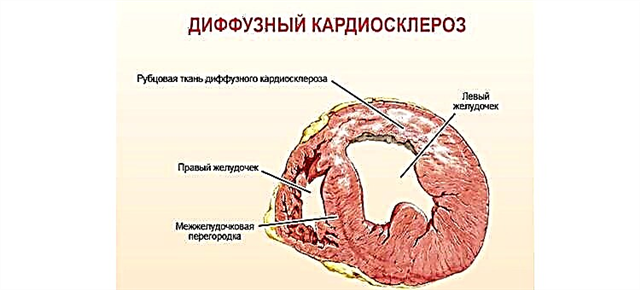Injuries to the larynx can have different causes - while burns, that is, damage due to contact with thermal factors or chemical agents, often occur due to negligence, as well as in the case of concomitant injury to the digestive tract. Any traumatogenic effect on the mucous membrane of the larynx determines the risk of developing respiratory disorders. In this case, the injury to the larynx is usually not isolated; the pharynx, esophagus, and oral cavity are also affected. How is a burn of the mucous throat treated and what methods are used to alleviate the patient's condition?
Etiology and classification
The choice of treatment is determined by the type of burn injury and the severity of the patient's condition. Burns of the throat and, in particular, the larynx can occur in patients of any age. In this case, not only the type of the damaging agent is important, but also the route of its entry - swallowing, inhalation (inhalation), aspiration ("sucking" of the gastric contents into the respiratory tract). A burn of the larynx is most often attributed to inhalation:
- hot steam;
- chemical substances.

Since the nature of the damaging agents varies, throat burns can be classified as:
- thermal;
- chemical.
In general, there is the concept of inhalation trauma, which is understood as damage to the organs of the respiratory system associated with the inhalation of damaging agents of any nature.
Aspiration of stomach contents can lead to chemical burns - this happens if the patient swallows a large amount of a chemically aggressive substance and vomits repeatedly. At the same time, there is a certain concentration of a chemical agent in the vomit, which is still active and can damage any contact tissues. The greatest risk of aspiration is with loss of consciousness.
A mild burn of the throat is characterized by catarrhal inflammation, severe - by deep tissue necrosis.
The reaction from the larynx occurs even in the absence of direct contact with the provoking factor. Edema of the mucous membrane, accompanied by characteristic symptoms, is observed with a burn of the lower pharynx. Inhalation of corrosive gases affects the trachea, bronchi.
With a burn to the larynx, damage can affect:
- Epiglottis.
- Cherpalonadlaryngeal folds.
- Vestibular folds.
- Arytenoid cartilage.
 Chemical burns of the larynx are believed to be the most common. Since the chemical environment first comes into contact with the oral cavity (lips, tongue), and then with the pharynx, the soft palate, they are also involved in the process. The same applies to thermal injury - thermal inhalation injury is accompanied by a large area of contact with the damaging factor.
Chemical burns of the larynx are believed to be the most common. Since the chemical environment first comes into contact with the oral cavity (lips, tongue), and then with the pharynx, the soft palate, they are also involved in the process. The same applies to thermal injury - thermal inhalation injury is accompanied by a large area of contact with the damaging factor.
With a chemical burn, damage can be dangerous, regardless of the type of substance - both acids and alkalis in high concentrations have a significant cauterizing ability. However, lesions with alkaline chemicals are considered more severe due to deep necrosis and the possibility of additional spread from the contact area to healthy tissue.
Symptoms
Both thermal and chemical throat burns have similar characteristics. Since the injury to the larynx is combined with an injury to the pharynx, the symptoms are quite numerous and pronounced. Among them are:
- Pain.
The pain is localized in the oropharynx, neck, if the esophagus and stomach are damaged, it also spreads to the epigastric region. Patients describe it as burning, stabbing, note a sharp onset and intensification when swallowing saliva, trying to talk. Painful sensations arise suddenly and even with a mild degree of burns persist for several days.
- Impaired swallowing, voice formation, salivation.
It is difficult for a patient with a burned throat to swallow even water and his own saliva. He cannot speak or pronounces words with difficulty, his voice is changed, hoarse, intermittent. The secretion of saliva (salivation) is enhanced, it flows out of the mouth.
- Swelling of the larynx mucosa, respiratory failure, cough.
Laryngeal edema leads to increased difficulty breathing and stenosis (narrowing of the lumen); there is a risk of asphyxiation (suffocation). The sharp pain of a severe burn can cause shock. A cough is possible, accompanied by the release of mucopurulent sputum mixed with blood, fragments of tissue that has undergone necrosis.
- Signs of intoxication.
The more extensive the area of the burn surface, the more products of the burn reaction enter the body. In addition, with a chemical burn, the aggressor chemical is also absorbed. This leads to weakness, fever, nausea; some substances, for example, acetic acid, cause hemolysis of erythrocytes, liver and kidney disorders.
The most dangerous symptom of a burn of the larynx is respiratory arrest. It can be due to stenosis or shock.
Vomiting (including with an admixture of blood), a violation of taste perception may also be observed. When examining the pharynx and larynx, redness and swelling of the mucous membrane, the formation of plaque, blisters, and ulcers on its surface.
With thermal inhalation trauma of the larynx, traces of burns can be detected on the face, neck, and the anterior surface of the chest. Depending on the circumstances of the injury, traces of soot may be found in the oropharynx, the patient coughs up phlegm with soot. Patients often lose consciousness.
Treatment
What to do to help a patient with a burn of the larynx? Trauma can cause significant laryngeal edema and stenosis. This is especially dangerous for children, whose organ lumen is narrower than that of adults. Therefore, you need to immediately transport the patient to a medical facility or call an ambulance.
In case of thermal injury, contact with the damaging factor should be stopped - all other measures (respiratory support, infusion therapy, tracheostomy) are carried out by specialists.
In case of chemical damage, so-called antidotes are used - agents that can weaken the effect of the irritant. The good thing about antidotes is that they can stop the activity of a chemically aggressive agent and thereby prevent deep tissue damage. However, improper use leads to an expansion of the boundaries of the burn surface and an increase in the severity of the injury. In addition, it is not always known by what substance the mucous membrane of the patient's throat is damaged - this makes it impossible to choose the right antidote. It should also be borne in mind that neutralization with an antidote in case of damage to the larynx is fraught with difficulties due to its anatomical localization.
 A person who provides first aid to an injured patient needs to understand that:
A person who provides first aid to an injured patient needs to understand that:
- rinsing will affect only the mucous membrane of the mouth and pharynx;
- to deliver any medicinal substances to the lesion, you need to use inhalation;
- not every antagonist substance can be an antidote; the principle of mutual neutralization of alkalis and acids is not always appropriate.
Among the urgent measures for a burn:
- Rinsing and inhalation with weak solutions of alkalis (sodium bicarbonate 1% or 2%) and acids (citric, acetic 1%) - if the burn is chemical.
- A strict regime of silence for 10-14 days, which is not interrupted even by a whisper.
- Refusal to eat immediately after an injury until a doctor's examination.
If the chemical that caused the throat burn is unknown, only clean water can be used for gargling.
In this case, inhalations are not indicated, they are prescribed only by a doctor after an objective examination.The water can be used both cool and slightly warm. Although acids are antidotes to alkalis, and alkalis to acids, concentrated solutions and strong chemical media should not be used. All substances used should be of low concentration, even if the person providing assistance is sure of which chemical he is dealing with.
Also, with a burn of the larynx, the following are shown:
- relief of pain syndrome (Promedol, Pantopon);
- elimination of edema (Prednisolone, Hydrocortisone inhalation);
- antibiotic therapy (Penicillin, Ampicillin);
- detoxification therapy (sodium chloride solution, glucose, Hemodez), etc.
The question of the patient's nutrition is decided after stabilization of the state; it is carried out in small sips (siping) or through a nasogastric tube. Only liquid food is used in the form of special mixtures. If breathing is impaired, a tracheostomy may be required - the installation of a special tube in the trachea that allows the patient to breathe even when the upper airway lumen is blocked.



